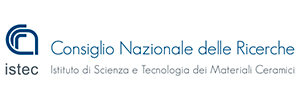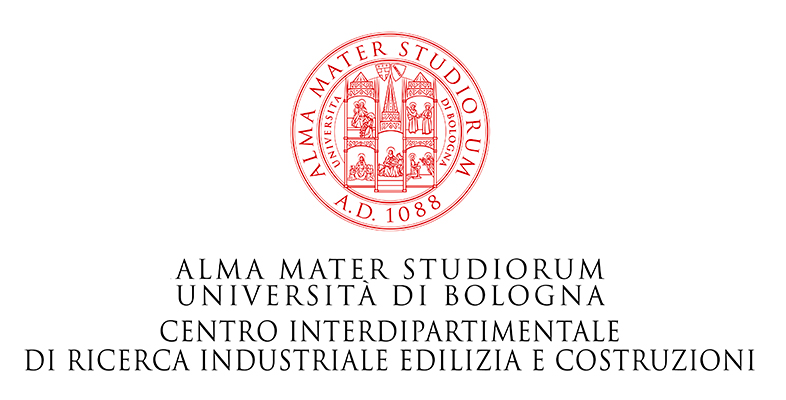RESEARCH PARTNERS
GEOSMARTLAB
ROLE IN THE PROJECT
Geosmartlab coordinates phase 1: “Implementation of measuring chains of reference parameters in the smart-sensor material system”.
The activity includes technical-economic analyses aimed at identifying the characteristics of the sensors necessary for the self-diagnosis in construction materials, the identification of the best sensors with the necessary characteristics, the development of prototype sensor-measurement-data logger solutions and finally the data management for monitoring detachment /cracking phenomena and behaviours associated with comfort and environmental health. Phase 1 is divided into a first part dedicated to identifying the parameters that will guide the choice of sensors and the measurement chain (as useful life-cycle system, sensor density, cost, acquisition frequency), followed by a second part dedicated to experimental tests in laboratory. The development of a monitoring system demonstrator with web dashboard is also planned for sharing and publishing the results
OUTPUT
- Report of the specifications of the sensors selected for measuring the parameters
- Prototypes of measurement chains and sensor-power-transmitter systems for each material studied
- Demonstrator for data management and related software
Geosmartlab at a glance
The laboratory was created with the aim of structuring the research activities that Sis.Ter S.r.l. has promoted over the years through collaborations with Universities, Research Centers and through the development of applied research on behalf of private structures and which led in 2014 to accreditation to the National Research Registry with the identification number 61807HTP, to the definition of a framework agreement for applied research and technology transfer with the University of Bologna (2015) and for the identification of the directional Tower of the Enzo e Dino Ferrari Autodromo in Imola as an appropriate location.
In fact, through the contribution of an highly specialized team, the company has gained a series of experiences and activities which are the subject of specific presentations and publications.
The research laboratory intends to develop technologies and services relating to geographical issues and smart cities in line with the Emilia-Romagna Regional and Innovation Strategy for Smart Specialization (RIS3) line with regard to related strategic priorities.
ISTEC – CNR
ROLE IN THE PROJECT
The Cultural Heritage group of ISTEC-CNR, coordinates phase 2: “Prototyping smart sensorized materials for durability, comfort, energy performance control” and deals with the development and characterization of lime / NHL mortars and plasters (CL / NHL) in natural, eco-friendly fibers (free of synthetic additives and possibly recoverable at the end of their life), compatible with the materials making up the historic building (UNI 11488: 2013).
Specifically, the activity consists in redefining products already in use in construction and restoration to make them innovative, sustainable and suitable for integration with sensors.
The optimization of the compositional and structural characteristics is based on the restoration function to be performed (UNI 11488: 2013); on the need to ensure the insertion of sensors aimed at checking durability, comfort and energy performance; on the need to ensure high product durability and excellent health, safety and energy efficiency characteristics.
OUTPUT
- Smart system reports developed for the control of phenomena that affect comfort, energy efficiency, durability
- Prototypes of sensorized masonries
ISTEC – CNR at a glance
The Institute of Science and Technology of Ceramic Materials of the National Research Council (ISTEC – CNR) is configured as the only research structure of the National Research Council, and the largest Italian structure operating in the country with multi-year programming, specifically aimed at global study of ceramic materials.
The Cultural Heritage group of ISTEC-CNR for about 15 years has combined the archaeometric-diagnostic study of historical-traditional mortars with the development of restoration mortars with putty or natural hydraulic lime to be used in different conservative contexts using analytical techniques and instruments (MO, XRD, XRF, SEM-EDS, DTA-TGA, MIP, etc.) available from the laboratories.
The objective is product and process innovation in the creation of restoration materials, to be used in archaeological and architectural conservative contexts, which cross the themes of sustainability and efficiency in the use of resources, and to offer excellent services to businesses and professional figures in the Conservation Processes chain.
Thanks to collaborations with operators in the sector and participation in research line 4 of the MITAI Laboratory of the Ravenna Technopole in Faenza, lime-based restoration mortars and pozzolanic additions have been developed and successfully applied in different conservative contexts
CENTRO CERAMICO
ROLE IN THE PROJECT
Centro Ceramico is responsible for phase 3: “Prototyping of smart sensorized materials for the diagnosis of deformations, defects, detachments”.
In particular, it deals with the development and creation of the integrated material-sensor system in bricks, adhesives and geopolymers, as well as the “design” of the characteristics and the optimization of the performance of the entire measurement chain.
Centro Ceramico has developed the skills to set up doughs, to prepare samples and for characterization, thanks to the tools, but most importantly thanks to a team of highly experienced researchers and technicians. Centro Ceramico has long-standing experience in the formulation of traditional and advanced brick mixes (improved by waste materials), for an improvement of the energy efficiency of buildings, or for their functionalization. The enhancement of waste as new Secondary Raw Materials in building materials organized, has been an important line of research for over 10 years.
Thanks to the its equipment and its staff of highly experienced researchers and technicians, Centro Ceramico has the skills to carry out the preparation of samples and their characterization. The laboratory has long-standing experience in the formulation of traditional and advanced brick mixes (obtained e.g. from waste materials), for an improvement in the energy efficiency of buildings, or for their functionalization. The enhancement of waste as secondary raw materials in construction has been an important line of research for over 10 years
OUTPUT
- Report of the smart systems developed for the control of deformations, defects and detachments
- Smart system prototypes
Centro Ceramico at a glance
Centro Ceramico is a research and experimentation centre for the ceramic industry established in 1976 and managed by a University Consortium. Accredited by Accredia (n. 0058), it is part of the High Technology Network of the Emilia-Romagna Region and adheres to ECTP – European Construction Technology Platform.
The main activities are carried out in the two offices (Bologna and Sassuolo): research and technology transfer; business services and technical assistance; analysis and tests on raw materials, semi-finished and finished products; support for the development of national and international regulations; Training; technical-scientific consultancy and research projects for participation in EU calls.
The synergy with university scientific research guarantees an innovative approach to solving the technological problems of the business world, as well as transparency and rigor in conducting tests and analyzes for certifications and third parties.
CertiMaC (Project Leader)
ROLE IN THE PROJECT
As
MiMeSis project leader, CertiMaC is responsible for the scientific coordination of all the 5 phases as well as for the
dissemination activity.
Furthermore, CertiMaC is directly responsible for phase 4: “Characterization and laboratory validation of
integrated systems using full scale masonry models”.
In particular, it coordinates research activities relating to the durability tests of materials and the validation of sensor systems (both in laboratory and in situ), developing and implementing a specific test protocol for this new type of materials.
CertiMaC’s role in the project is closely linked to its long-term industrial research activity for the development of innovative materials with high performance (thermal, mechanical, durability) and low environmental impact (use of regional industrial waste, secondary raw materials, circular economy).
OUTPUT
- Validation protocols for integrated systems in sample walls
- Validation protocols for FRCM (Fiber Reinforced Cementitious Matrix) systems
- Report on the results of environmental simulations carried out on a laboratory scale
- Prototypes of composite masonry that integrate the different solutions developed
CertiMaC at a glance
CertiMaC is a Research Body founded and participated by ENEA and CNR in the Advanced Materials Science Park of Faenza. Accredited laboratory of the Emilia-Romagna High Technology Network, it is part of the Clust-ER Building and Constructions and of the Clust-ER Energy and Sustainability.
CertiMaC promotes innovation in the energy and materials sector by offering laboratory analysis, industrial research and specialist consultancy services.
MATERIALS: analysis and tests, experimental, numerical and on-site measurements, CE marking of construction products. Recognized by MISE and the EU Commission as a Notified Body No. 2685 pursuant to the CPR Reg. (EU) 305 / ’11); laboratory authorized by the CSLP – Superior Council LL.PP – to operate in the context of the qualification of composite materials for structural use of the FRP, CRM, FRCM and FRC.
ENERGY: solutions and technologies for energy efficiency, infrastructures and industrial processes, diagnosis and energy management.
INNOVATION: development of technologies and processes to improve performances and sustainability of materials and products, drafting and management of research projects financed with EU funds.
CIRI-EC
ROLE IN THE PROJECT
CIRI EC coordinates phase 5: “Validation of the integrated system in a real environment on the historical built heritage”.
CIRI-EC is responsible for on-site verification. This means proving the effectiveness in the field and detecting any system application problems or signal acquisition and / or management.
The activity also involves the development of a sensorized ceramic material for the measurement of humidity in the walls, able to reach thermo-hygrometric balance with the masonry without altering it or suffering from salt deterioration. The measurement reliability will be verified on samples in the laboratory and on model walls subjected to capillary rise of water, with and without salts. Finally, the development of FRCM type reinforcement systems, also with a geo-polymer matrix, with integrated optical-fiber deformation sensors. These systems will be able to provide information on the deformation state of the reinforcement and therefore also on any detachments. The measurement system is developed using model walls which are then tested to reproduce different failure modes.
OUTPUT
- Report of the “Certosa di Bologna” case study
- Report of the “Recovery intervention” case study
- Guidelines for the installation, use and maintenance of smart systems
- Demonstration video of the field experimentation with evidence of the potential effects for the protection of historic buildings
CIRI-EC in breve
The Interdepartmental Center for Industrial Building and Construction Research (CIRI-EC) is part of the High Technology Network of the Emilia-Romagna Region. It is structured to develop applied research activities with acquired experience covering a wide offer dedicated to industrial research, innovation and technology transfer.
CIRI-EC has recognized skills in the study of ancient architecture materials, their characteristics and their degradation processes, with particular reference to rising damp and salt crystallization. CIRI-EC developed competences in the study of historic masonry and its reinforcement technologies, as well as in the durability of these systems in the building’s environment.
It is specialized in composite materials for structural reinforcement such as FRP and FRCM; in particular in their characterization of the mechanical behavior at different scales, from materials to their behavior applied to structural elements. CIRI-EC has also specific experience in the construction of model walls to replicate collapsing phenomena of structural elements in laboratory. Finally, CIRI EC has gained considerable experience in the field of structural monitoring.
Industrial Partners
Kerakoll

World leader in products and services for sustainable construction, historical restoration and interior design. Within the project, the company will contribute to the development of integrated sensor systems within FRCM reinforcements, mainly by testing fiber optic systems and experimenting with new types of matrix, including those based on geopolymer.
Litokol SPA

The company is specialized in the production of high-tech adhesives, sealants, resins and building materials. Its role in the project is to contribute to the development of specific types of masonry mortars and tile adhesives which can be integrated into the historical building and interact with the applied sensors.
Sgubbi italiana srl

The company, specialized in high quality products in the hydraulic sector and premixed binders, will participate in the development of hydraulic lime-based mortars specific for the recovery and restoration sector in order to improve the performance of the building and integrate into optimally the sensor part.
tenenga

The company is specialized in system integration, for this reason it will contribute to the choice and selection of sensors currently available on the market and to the optimal configuration of the measurement systems.
SESTOSENSOR

The company deals with the development and marketing of sensor systems based on optical fibers. In the project, it will contribute to the monitoring of deformations related mainly to reinforcement systems and will integrate the different types of sensors where necessary.
STUDIO LEONARDO

It is leader in the sector of analysis, restoration and structural strengthening of cultural heritage. Within the project, it will contribute to the selection of the pilot buildings the sensor systems will be tested and it will proceed with both the installation and the resolution of problems relating to the installation of the tested solutions.
Banca della Calce

The company, in its role of technology transfer organism, will support the application, installation and training phase of the workers about the new sensorized systems developed.





